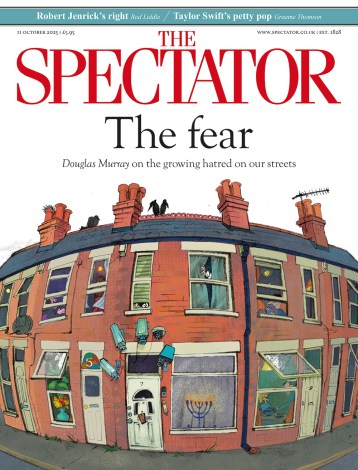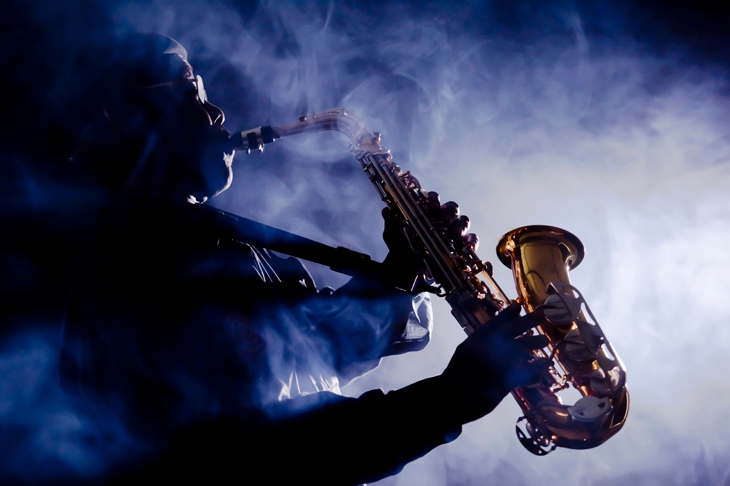I’d recommend any aspiring writer to marry a jazz drummer. It’s done wonders for my powers of concentration. If I can write while my husband is practising rolls, or rehearsing with his quartet loudly enough that I don’t know why they didn’t just set up in my study, or worst of all tuning his drums (Bam. Bam. Bam. ‘Nooooo!’ Bam. Bam. Bam. ‘Nooooo!’), then I could knock off novels amid shock and awe in 2003 Iraq.
As part-requirement, part-perquisite, over the years I’ve attended a range of jazz clubs, festivals, and concerts. So I can testify: the musicians are nearly all men.
Jazz and jazz education make up a small world, but gender disparity has become a mighty tempest in this teacup. In September, the majority of members at a Europe Jazz Network conference endorsed a ‘-Manifesto on Gender Balance in Jazz and Creative Music’. Last month, the prestigious Berklee College of Music launched an Institute of Jazz and Gender Justice (dig that alliteration).
I’m a little torn on whether to regard this curious incidence of the penis in the nighttime as a problem. But plenty of folks in the field do see the preponderance of men in jazz as a problem — the fashionable solution to which is definitely a problem.
An outfit called Keychange has convinced more than 100 music festivals to sign up to a ‘50:50 gender balance pledge’ by 2022, including the major UK jazz festivals in Cheltenham, Manchester and London (which ends this weekend). The musical powers that be may prefer to regard this target as an ‘aspiration’, but ‘50:50’ is an arithmetic formulation. It’s a quota.
My anecdotal impression of hairy–chestedness in jazz is quantifiable. Although female vocalists are common, the saxophonist Issie Barratt calculated in 2016 that women constitute a scant 5 per cent of jazz instrumentalists. At the Birmingham Conservatoire where my husband teaches, only three out of 70 instrumental jazz students are female (all three studying sax). That’s less than 5 per cent.
What is wrong with this picture? I may be one of those temporal Luddites who still thinks it’s 1995, but believe it or not 2022 is practically, like, tomorrow. Only one in 20 jazz instrumentalists now being female, how do we get half the performers in festivals to be women virtually overnight without compromising standards?
We’ve been here before, and this is just a conspicuously insensible iteration of Equal Everything for Everyone (or EEE — catchy). There’s no way to suddenly press a button and hoist that many female jazz musicians onto the stages of the UK’s best festivals without drastically discriminating against men, and in the process elevating numerous women who are not ready for prime time.
The legislation of gender parity is also injurious to the music. I’ve exchanged a flurry of emails with Birmingham’s head of jazz, Jeremy Price. He observes: ‘The band leader’s choice of personnel is as important as the composing and the band leader’s playing. You choose personnel to fit your music and that’s the way it should remain. That a festival dictates or seeks to overly influence your personnel choices is way too anti-art for me.’ Yet if Price warns festival organisers against ‘searching for inexperienced female jazz artists to make up the numbers’, he’s ‘hung out to dry as a misogynist’. He describes the usual response as, ‘So you’re saying that women aren’t as good as men at jazz!’
‘You learn through the experiences of playing with people who are better than you,’ Price wrote. ‘Female jazz artists should be allowed to choose who they play with. Unsurprisingly, most want to play with seasoned experienced players with a deep pedigree in the music who happen to be male, for the sake of their own playing getting tested at a high level. Inadvertently, the 50:50 brigade are constricting the supply of oxygen necessary for female artists to develop. The immediate riposte to this of course will be “so you’re saying female artists can only develop if they play with men”. Ahhggh!’
This isn’t to diss female jazz instrumentalists. Guitarist Mary Halvorson and saxophonist Ingrid Laubrock, for example, are stellar. Yet I’d not say that Mary and Ingrid contribute some distinctive feminine sensibility, since I don’t buy the idea that there’s any such thing. They’re great musicians, full stop, and I doubt you’d know their sex if they played behind a curtain.
In the race to righteousness, we seem to have kicked off a broad institutional impatience. Inclusion that might more healthily evolve organically across a longer period of time now has to be installed by fiat, right-fucking-now. The matter of ‘too many’ men in jazz is especially perverse, since there’s little evidence that women have been actively discriminated against. Jazz education has been eager to accept more female students for years. The reasons jazz has been so fuelled by testosterone are complex, but clearly have to do with self-sorting. At the Birmingham Conservatoire, this year’s applicants to study culturally ‘masculine’ instruments — trumpet, trombone, guitar and drums — are 100 per cent male. Sax, bass and piano applicants are 90 per cent male. Vocal applicants are entirely female. Hence the question of whether there’s really a ‘problem’ to solve so badly.
Once again, fixing perceived injustice with another injustice creates — surprise — more injustice. Giving women a leg-up that they may or may not deserve makes it nearly twice as hard for talented cats who’ve paid their dues to win slots on the programme. And yeah, my husband’s one such veteran. Both his regular bands in the US and UK are all-male. His upcoming album features the pianist Carmen Staaf not for the sake of gender branding but because she’s magnificent.
The more substantial problem for jazz is its audience. It’s small. The encouraging uptick in younger fans since 2010 will only continue if the music is smoking. A dynamic genre is bound to draw more female musicians over time, without any quotas.







Comments